
New Gear
Equipment
Sawmilling
Tech update: Infeed systems
Canadian Forest Industries shares the newest infeed systems on the market.
June 19, 2019 By Canadian Forestry Staff Report
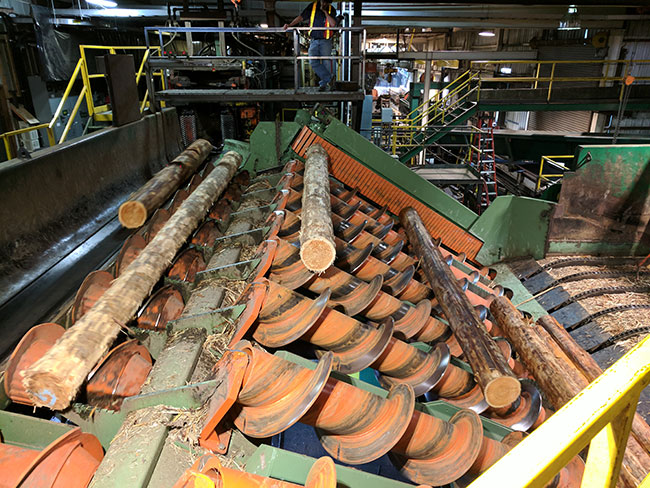 Springer-Microtec
Springer-Microtec Springer-Microtec

Simple, reliable, low maintenance operation, low power consumption – these are just a few benefits of the Springer screw technology, which is usable for all types of log species, including crooked and broken legs, for lengths of eight to 65 feet, proven by customers all over the world. Combining the functions of singulation, alignment and acceleration in the longitudinal direction, the screw technology is suitable for high-speed feeding of log sorting, saw and debarker lines and for smooth transfer to the receiving conveyor. The Screw Unscrambler with helical screw rolls singulates logs from a pile and includes an integrated stop-end chain on the zero end. The Screw Feeder aligns, singulates and accelerates the logs in the longitudinal direction as they are loaded onto the receiving conveyor. The Screw Conveyor transfers singulated logs without the need of chains and it is fitted with a rigid-coated stop wall.
G-Car Design
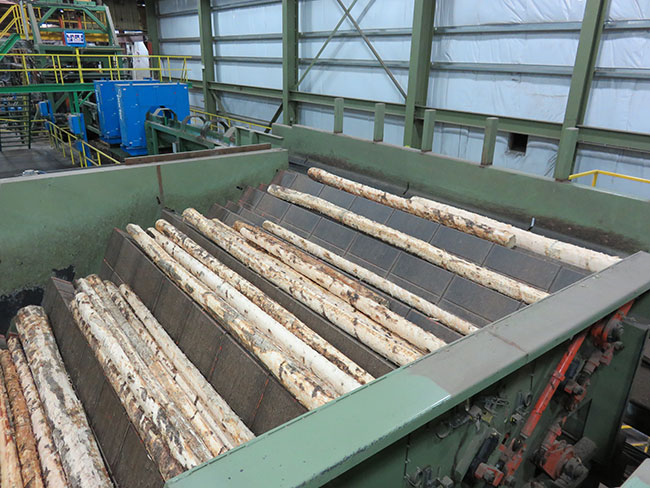
G-Car Design has recently supplied the North American sawmill industry with thirty patented ALSLS custom-designed log singulators and pushers. This supply comprises dual module and single module machines, plus single step and two step log pushers. These machines are now operating in the U.S. southern yellow pine belt, the U.S. Pacific northwest, plus central B.C. and northern Alberta. These machines are feeding canter lines, debarkers, merchandisers and log sorting lines. All the drive and mechanism components are located on the outside of the bin walls for convenient maintenance. Custom designs are available to meet any sawmill’s requirements, with feed speeds from 15-60 LPM.
Wolftek
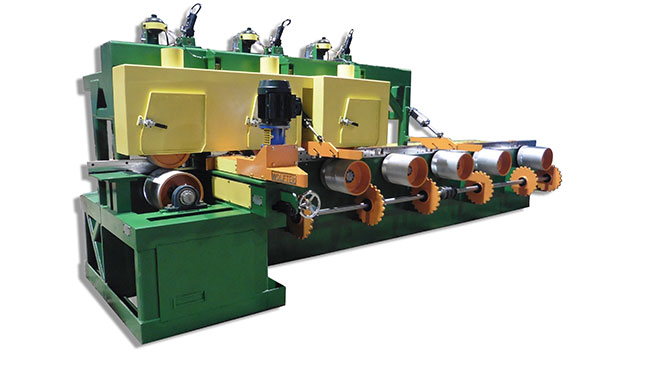
Wolftek has been a primary supplier for the wood products industry for the past 30 years, specializing in upgrading and retrofitting planer mills. Focusing on throughput and safety, our infeed systems work to reduce the “jam-ups” caused by thin and thick boards, lower quality fibre and dry or damaged wood. Wolftek’s OEM-offered infeed systems can be adapted to all planers currently used in the industry: dynamic roll tensioning system (DTS), electric drives, feedtables, bridges, live shears, plus wear parts like rolls, guides and plates.
Veneer Services
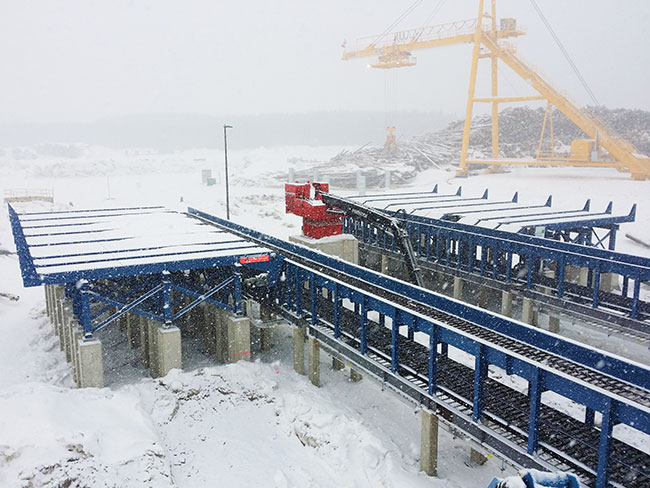
Log decks and strands from Veneer Services are engineered to reduce operational costs and maintenance headaches. Strands run independently with individual drives, which significantly reduces the horsepower required. All bearings are small enough to be handled without a crane and head shafts are short enough for easy removal. These features reduce the cost of replacement parts and time required to change strands and bearings – change a strand in an hour instead of days and a bearing in minutes instead of hours. Also, installation is easier than most systems. Decks have no couplings to align and only ten bolts to install.
USNR
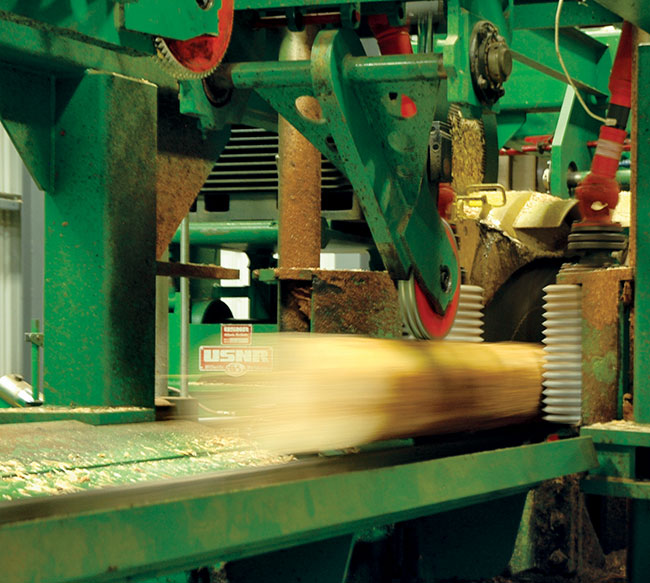
Optimal log recovery first and foremost requires proper positioning ahead of the cutting tools, regardless of the amount of scan data or computer analysis performed. Most infeed systems have too many transitions and variables that introduce inaccuracies into the orientation of the log. Log rotation within eight to 10 degrees of optimum isn’t good enough when minimal increases in recovery can make the difference in a mill’s financial performance. USNR’s Log Positioning Infeed System accurately determines the shape of the log, calculates the highest-value cutting solution, then precisely rotates, positions and transports the log through the cutting tools to achieve the most profitable solutions.
Linden Fabricating
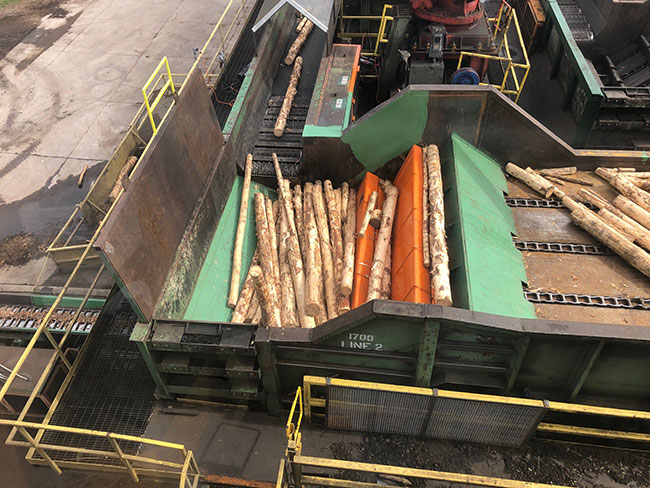
Linden’s latest self-cleaning double acting step feeders unscramble, singulate and feed logs one at a time using two opposing moving sections activated by a single electric/mechanical drive handling up to 50 logs per minute while clearing debris as it unscrambles and singulates logs. The revolutionary log feeder from the designers of the step feeder, features simple mechanical electric drives which eliminate hydraulics. All models are also equipped with a 20-point auto-lubrication system. The log feeders ship as a complete unit requiring no assembly. Models are available in sizes to suit log lengths from eight to 24 feet and log diameters three to 30 inches.
Brunette Machinery
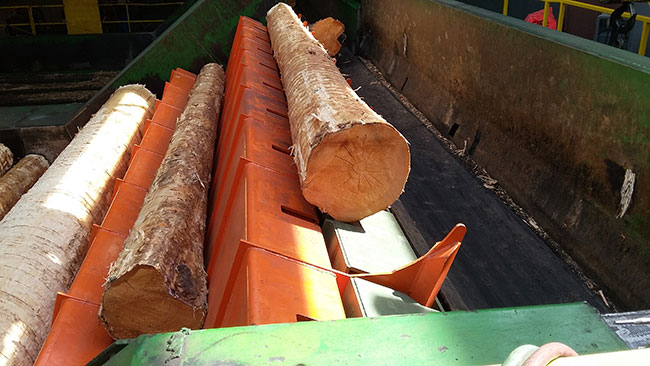
Brunette Machinery’s patented Retract-to-Load (RTL) Log Singulator, with the patented pre-stage log positioning, robust design, heavy duty torque tube drive assembly, re-enforced steps, has already proven to reduce maintenance costs and will give a mill tighter log gap control. At the park or pre-load position the log sits right above the conveyor and is ready to be dropped in. The reducer crank arm is sitting over the top of the stroke holding the log in position; creating a negative torque which reduces the load on the drive and increases the ability to close the gap between logs. As the nose section retracts, the log is dropped into the conveyor, another takes its place in queue at the Retract-to-Load prestaging position. This reduces log gap, improves piece counts, and reduces maintenance costs on the log singulator as well as the conveyors it feeds into.
Print this page